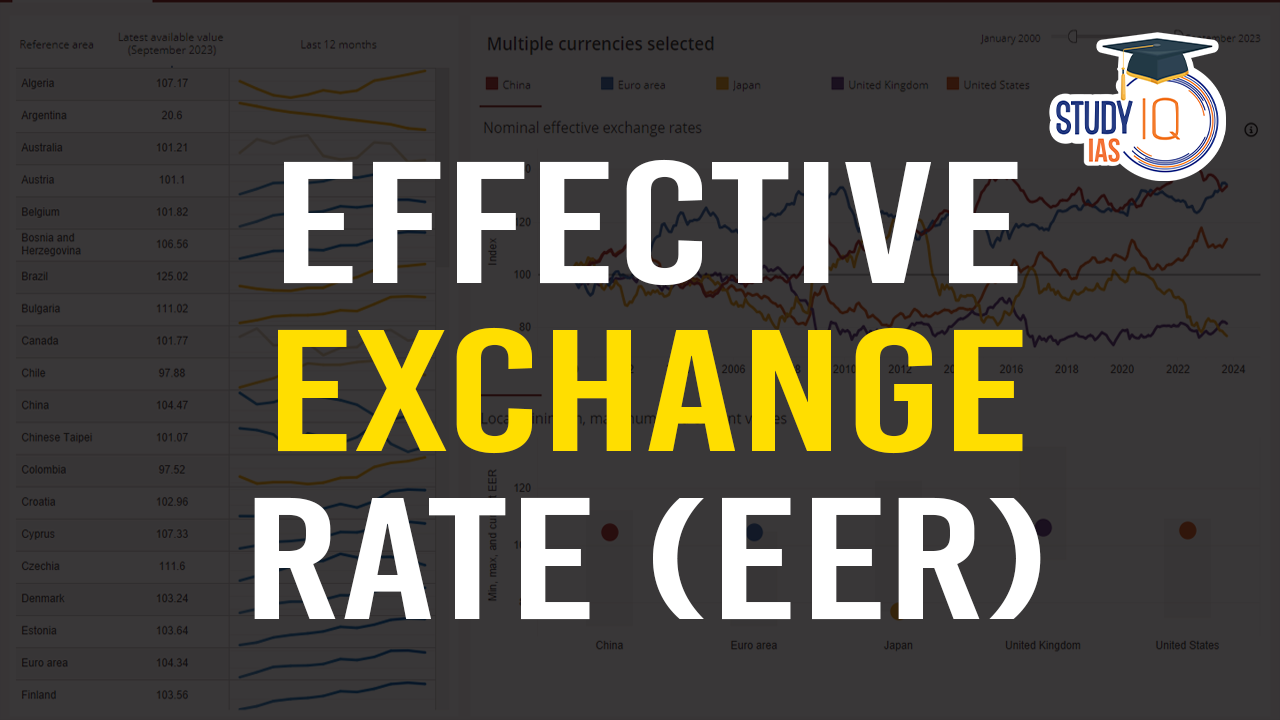Table of Contents
Context: Despite depreciating against the US dollar, the rupee’s Real Effective Exchange Rate index reached a record high of 108.14 in November 2024, indicating its appreciation in ‘real effective’ terms.
| Factors Contributing to the Current Scenario |
|
About Effective Exchange Rate (EER)
- EER is a measure of a country’s currency value relative to a weighted average of several foreign currencies.
- It is an index of the weighted average of the rupee’s exchange rates vis-à-vis the currencies of India’s major trading partners.
- The currency weights are derived from the share of the individual countries to India’s total foreign trade
Types of EER: NEER and REER
Nominal Effective Exchange Rate (NEER)
- It measures the rupee’s value against a basket of global currencies without adjusting for inflation.
- The Reserve Bank of India has constructed NEER indices for 2 baskets: one with 6 currencies (US dollar, Euro, Chinese yuan, Pound, Yen, and Hong Kong dollar) and another with 40 currencies.
- The NEER indices are with reference to a base year value of 100 for 2015-16.
- Increases in NEER indicate the rupee’s effective appreciation (making imports cheaper but exports less competitive), while decreases signify depreciation (boosting export competitiveness but making imports more expensive).
Real Effective Exchange Rate (REER)
- Adjusts NEER for inflation differentials between India and its trading partners.
- REER above 100 denotes that the home currency is overvalued and more expensive compared to its competitors.
- Any increase in REER means that the costs of products being exported from India are rising more than the prices of imports into the country. It results in a loss of trade competitiveness (Harmful in long run).
| UPSC PYQ |
Q. With reference to the Indian economy, consider the following statements: (2022)
Which of the above statements are correct? (a) 1 and 2 only (b) 2 and 3 only (c) 1 and 3 only (d) 1, 2 and 3 Answer: C |


 Minors Bank Account above 10 Years: Chan...
Minors Bank Account above 10 Years: Chan...
 Creative Economy in India, Current Situa...
Creative Economy in India, Current Situa...
 Food Adulteration in India: Definition, ...
Food Adulteration in India: Definition, ...





















